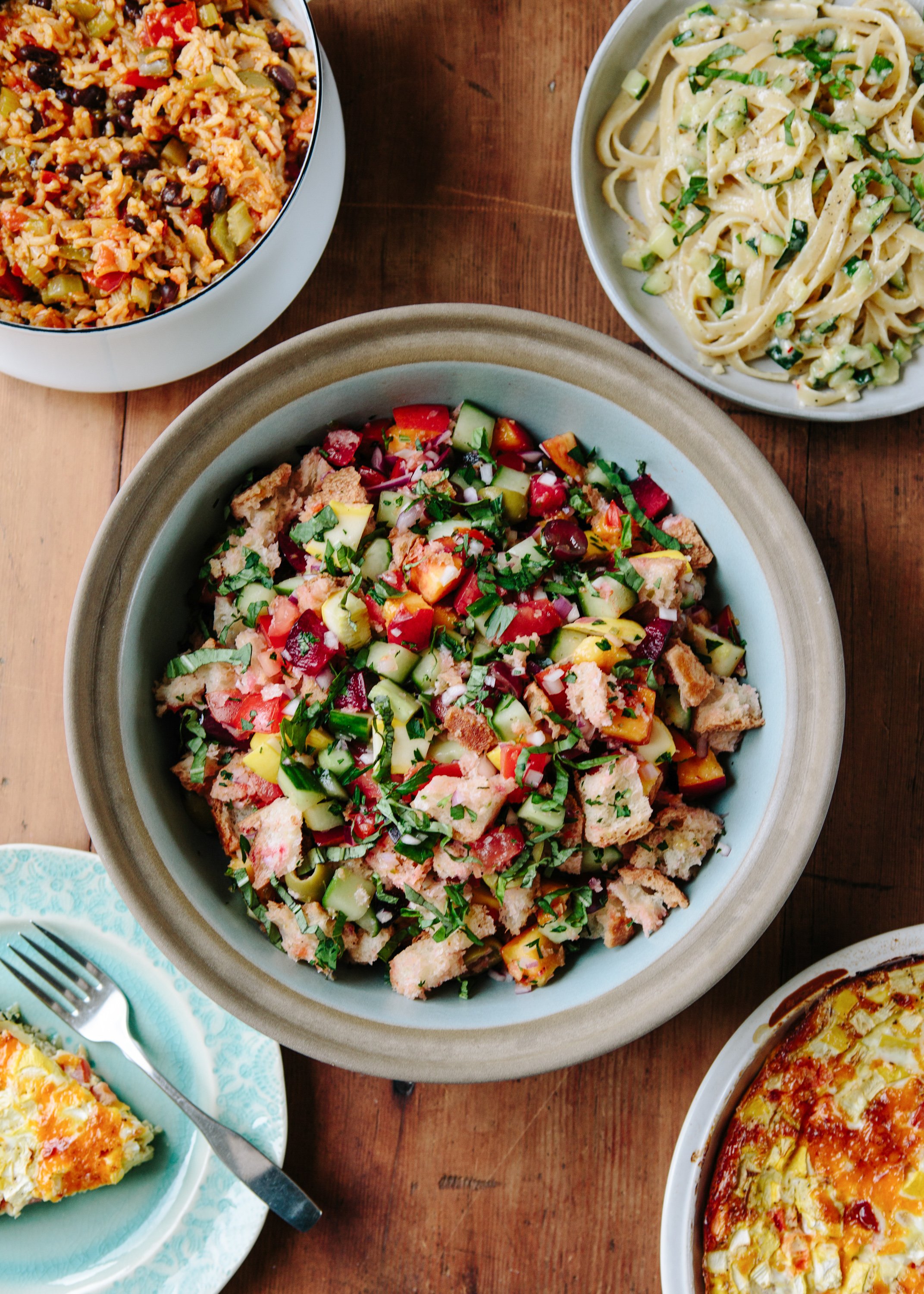
Affordable Meal Planning: Delicious Recipes & Tips: Complete Guide
What's in This Article
In today's fast-paced world, affordable meal planning has become a necessity for many families. With rising grocery costs, finding delicious recipes that fit within a budget can be challenging. However, with the right strategies and tips, you can enjoy tasty meals without breaking the bank. This comprehensive guide will explore budget-friendly meals, meal prep tips, and how to maximize your grocery budget.
Whether you're a seasoned cook or just starting your culinary journey, these insights will help you create cost-effective meals that satisfy both your taste buds and your wallet. Let's dive into the world of affordable meal planning and discover how you can transform your approach to cooking while saving money every week.

Strategic meal planning can reduce your grocery budget by up to 25% while ensuring nutritious meals
Understanding Affordable Meal Planning
Affordable meal planning is all about creating a strategic approach that allows you to enjoy delicious recipes without overspending. By focusing on budget-friendly meals, you can ensure that your family eats well while keeping costs under control. This involves careful planning, smart shopping techniques, and creative cooking methods.
Effective meal planning begins with understanding your family's nutritional needs and preferences, then finding ways to meet those needs economically. Many families report saving 20-30% on their grocery bills after implementing proper meal planning strategies. By understanding the core principles of affordable meal planning, you can make informed decisions that benefit both your health and your finances.
The Basics of Budget-Friendly Meals
Budget-friendly meals are not just about cutting costs; they're about maximizing value and nutrition. Start by planning your weekly menu around sales and seasonal discounts. Use store apps and digital coupons to find the best deals and pair them with in-store promotions for maximum savings.
Consider incorporating versatile staple ingredients like rice, beans, pasta, and potatoes, which are both affordable and incredibly adaptable. These ingredients can form the foundation of countless meals across different cuisines. For protein, look to more economical options like eggs, canned tuna, chicken thighs, and plant-based alternatives such as lentils and chickpeas.
By mastering these basics, you can create a variety of delicious recipes that won't strain your budget while still providing the nutrition your family needs.
Smart Shopping for Grocery Savings
Smart shopping is a crucial component of affordable meal planning that can dramatically reduce your food expenses. Begin by creating a detailed grocery list based on your meal plan and inventory what you already have. Stick strictly to this list to avoid impulse purchases, which typically account for 40% of grocery spending.
Compare prices across different stores and consider shopping at discount grocers, ethnic markets, and bulk stores for specific items. Don't overlook local farmers' markets, especially later in the day when vendors often discount their produce to avoid taking it home.
Learn to recognize truly good deals by keeping a price book of items you regularly purchase. This helps you identify when something is actually on sale versus when it's simply being marketed as such. By implementing these strategic shopping approaches, you can significantly reduce your grocery budget while still enjoying quality ingredients.
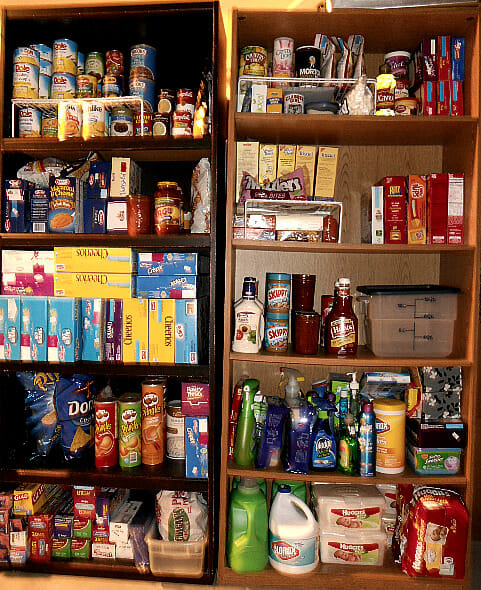
A well-stocked pantry with affordable staples like beans, rice, and pasta forms the foundation of budget meal planning
Delicious Recipes on a Budget
Creating delicious recipes on a budget doesn't mean sacrificing flavor or nutrition. With a little creativity and know-how, you can transform simple, affordable ingredients into mouthwatering dishes that your family will love. Focus on using seasonal produce, which is often 30-50% cheaper and significantly more flavorful than out-of-season options.
Experiment with herbs, spices, and condiments to enhance the taste profile of your meals without adding extra cost. A well-stocked spice cabinet can transform even the most basic ingredients into exciting culinary creations. Learning to build flavor through techniques like browning, caramelizing, and deglazing can elevate humble ingredients to restaurant-quality dishes.
By embracing these techniques and focusing on flavor-packed, affordable ingredients, you can enjoy a diverse range of meals that are both satisfying and economical without feeling like you're compromising on taste.
Easy Cooking Techniques
Mastering a few easy cooking techniques can make a significant difference in your meal planning success. Consider batch cooking, which allows you to prepare multiple meals at once, saving both time and money through economies of scale. Spending a few hours on the weekend preparing base ingredients or complete meals can streamline weekday cooking and reduce the temptation for expensive takeout.
Utilize time and energy-efficient cooking methods like slow cookers, pressure cookers, and sheet pan meals. A slow cooker can transform tough, inexpensive cuts of meat into tender, flavorful dishes with minimal effort. Pressure cookers can cook beans, grains, and stews in a fraction of the time of conventional methods. Sheet pan meals minimize cleanup while creating complete dinners with minimal active cooking time.
These accessible methods not only simplify the cooking process but also help you make the most of affordable ingredients, creating meals with maximum flavor and minimum fuss.
Incorporating Healthy Ingredients
Incorporating healthy ingredients into your budget-friendly meals is essential for maintaining a balanced diet without overspending. Focus on whole grains like brown rice, oats, and whole wheat pasta, which provide more nutrients and satiety than their refined counterparts. These complex carbohydrates serve as affordable foundations for countless meals.
For proteins, balance more expensive options like meat with economical alternatives such as eggs, tofu, and legumes. Plant-based proteins are typically 50-75% less expensive than animal proteins and can be incredibly versatile in recipes from various culinary traditions.
Prioritize seasonal vegetables and fruits, and consider frozen options, which are often flash-frozen at peak ripeness and can be more nutritious and economical than off-season fresh produce. By making health-conscious choices that align with your budget, you can create meals that nourish both body and bank account, ensuring your family enjoys a well-rounded diet without financial strain.
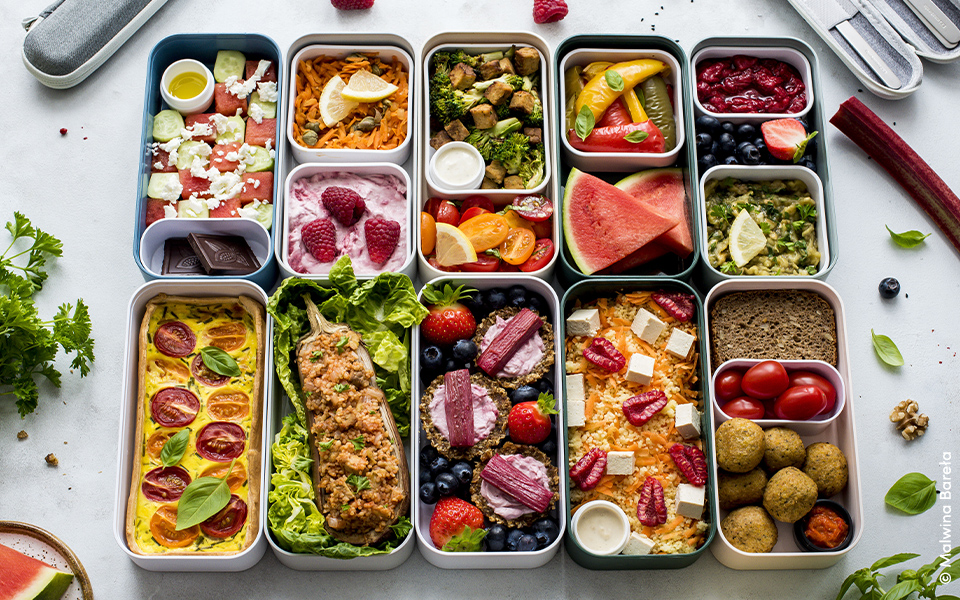
Batch cooking budget-friendly meals can save both time and money throughout the week
Meal Prep Tips for Busy Families
Meal prep is a game-changer for busy families looking to save time, reduce stress, and stick to their food budget. By dedicating just 2-3 hours each weekend to preparing meals and ingredients in advance, you can streamline your weekday cooking process and dramatically reduce the likelihood of expensive last-minute takeout decisions.
Studies show that families who implement regular meal prep can save an average of $100-$200 per month on food expenses while also reducing food waste by up to 40%. This approach not only helps you adhere to your budget but also ensures that you have healthy, delicious meals ready to go, even during the busiest weeknights when cooking from scratch seems impossible.
With some strategic planning and organization, meal prep can become a sustainable habit that transforms your relationship with cooking and budgeting.
Organizing Your Meal Prep
Successful meal prep begins with thoughtful organization. Start by planning your meals for the week, focusing on recipes that share common ingredients to minimize waste and maximize efficiency. Create a detailed shopping list organized by store section to streamline your grocery trip and avoid forgotten items.
Invest in a variety of quality storage containers in different sizes to accommodate different components of your meals. Glass containers tend to last longer and don't absorb flavors or stains, making them ideal for meal prep despite the higher initial cost. Label each container with the meal name, date prepared, and any reheating instructions to avoid confusion.
Consider creating a simple meal prep schedule that outlines which tasks you'll complete on your designated prep day, such as chopping vegetables, cooking proteins, and preparing complete meals versus components. By maintaining an organized approach to meal prep, you'll maximize the benefits while minimizing the time investment required.
Maximizing Efficiency in the Kitchen
Maximizing efficiency in the kitchen is essential for effective meal prep that doesn't consume your entire weekend. Set aside a specific time block each week for cooking and treat it as a non-negotiable appointment. Begin by tackling the most time-consuming elements like roasting vegetables or cooking proteins that can be incorporated into multiple meals.
Embrace the concept of parallel cooking by having multiple items preparing simultaneously—for example, something in the oven, something on the stovetop, and something in the slow cooker. Utilize time-saving tools like food processors, immersion blenders, and programmable appliances to speed up preparation and cooking tasks.
Consider preparing versatile base ingredients rather than complete meals to allow for more flexibility throughout the week. Cook a large batch of chicken, rice, and roasted vegetables that can be combined in different ways with various sauces and seasonings to create distinct meals without requiring completely separate preparation processes. By optimizing your kitchen workflow, you can make meal prep a seamless and sustainable part of your weekly routine.
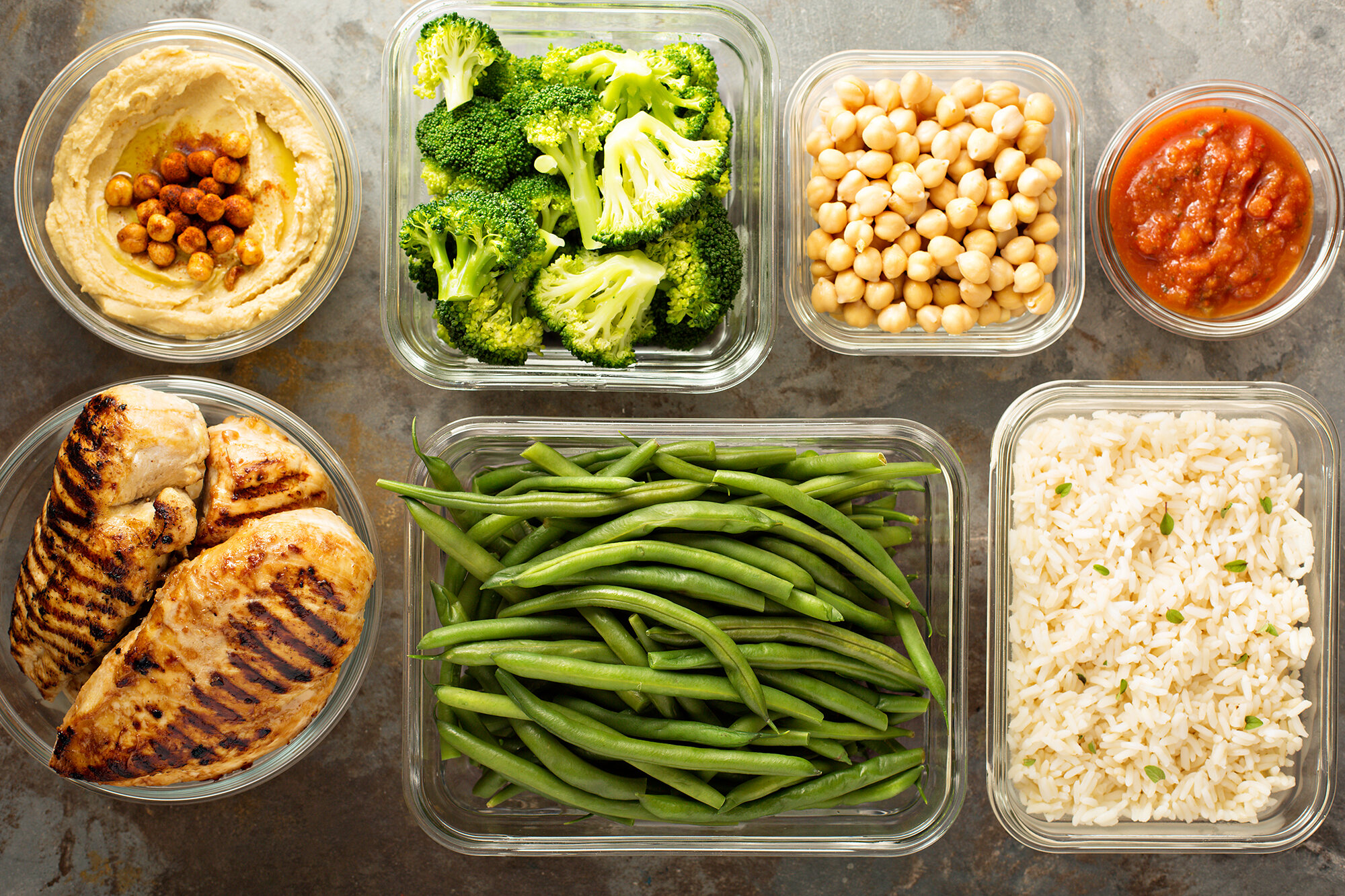
Properly organized meal prep containers help busy families stick to their meal plans and avoid expensive takeout
Creative Ways to Stretch Your Grocery Budget
Stretching your grocery budget requires creativity and resourcefulness, but the financial benefits can be substantial. Families who implement strategic budget-stretching techniques report saving 15-25% on their monthly food expenses without feeling deprived of enjoyable meals. By thinking outside the box, you can find innovative ways to make your ingredients go further and extract maximum value from every dollar spent.
This might involve repurposing leftovers into entirely new dishes, utilizing every edible part of your ingredients, or finding alternative sources for staple items. With some ingenuity and planning, you can enjoy a greater variety of meals without exceeding your budget constraints while actually reducing food waste in your household.
These creative approaches not only benefit your finances but can also introduce your family to new flavors and dishes they might not otherwise experience.
Repurposing Leftovers
Repurposing leftovers is perhaps the most effective strategy for minimizing waste and maximizing your grocery budget. Rather than simply reheating yesterday's dinner, transform it into an entirely different meal by adding new spices, sauces, or fresh ingredients. This approach, sometimes called "planned-overs" rather than leftovers, can make budget cooking feel fresh and exciting.
For example, leftover roasted chicken can become chicken salad, enchiladas, soup, or stir-fry. Sunday's roasted vegetables can be transformed into Monday's frittata, Tuesday's pasta primavera, or Wednesday's grain bowl. Even small amounts of leftovers can be combined into "clean out the fridge" meals like savory pies, fried rice, or hearty soups.
The key is to plan these transformations in advance as part of your meal planning process, ensuring you have the necessary additional ingredients on hand to complete the metamorphosis. By approaching leftovers as ingredients for new creations rather than as meals to be repeated, you can enjoy diverse dining experiences without additional expense.
Exploring Alternative Ingredients
Exploring alternative ingredients can open up new possibilities for budget-friendly cooking while potentially introducing more nutrition and flavor variety to your meals. Consider incorporating plant-based proteins like lentils, chickpeas, or tofu, which can cost 50-75% less per serving than meat while providing excellent nutritional value.
Experiment with different grains beyond the typical rice and pasta. Options like barley, bulgur, millet, and oats can provide new textures and flavors while often costing less than more popular grain choices. Similarly, explore international cuisines that traditionally feature economical ingredients in delicious ways—such as Indian dal, Mexican bean dishes, or Mediterranean grain bowls.
Don't overlook imperfect produce, which is often discounted by 30-50% despite having the same nutritional value as their more attractive counterparts. Many grocery stores now offer dedicated sections for these items. By being open to ingredient alternatives and embracing culinary diversity, you can create exciting dishes that are both affordable and delicious, expanding your culinary horizons while respecting your budget constraints.
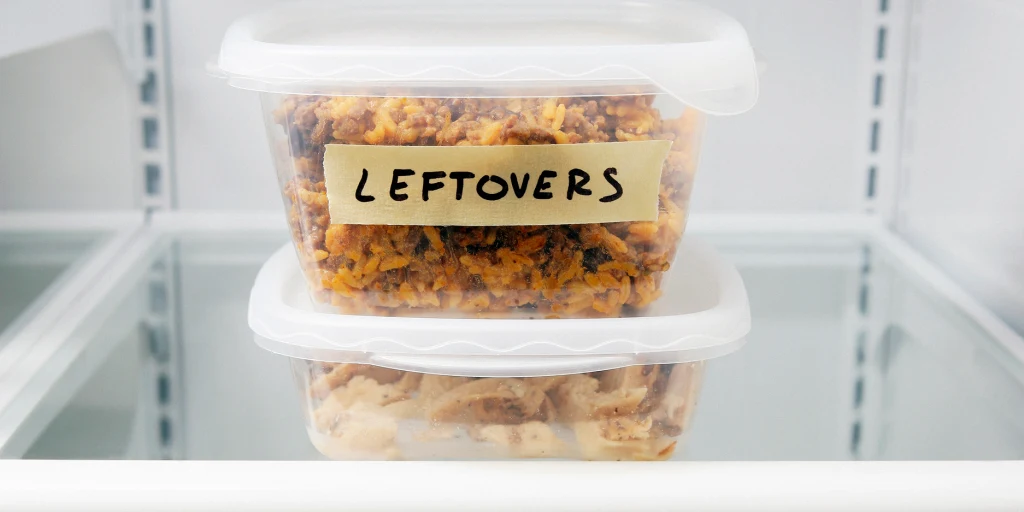
Transforming leftovers into new meals is a key strategy for maximizing your grocery budget
Conclusion
Affordable meal planning is a valuable skill that can transform your approach to cooking, nutrition, and budgeting. By focusing on delicious recipes and implementing smart shopping strategies, you can enjoy tasty, nutritious meals without financial strain. The average family can save $200-$300 monthly through consistent meal planning while actually improving their dietary quality.
As you continue to explore budget-friendly meals and refine your meal prep skills, remember that creativity and flexibility are essential components of success. Embrace the challenge of making the most of your grocery budget, and you'll discover that affordable meal planning isn't just about cutting costs—it's about maximizing value, reducing waste, and developing a more mindful relationship with food.
Start implementing these strategies today, even if just one or two at a time, and witness how small changes can lead to significant improvements in both your finances and your culinary satisfaction. The journey toward budget-friendly cooking is ongoing, but the rewards—both financial and gastronomical—make it well worth the effort.
Frequently Asked Questions
With strategic affordable meal planning, most families can save between $200-$300 per month on their grocery bills. This represents savings of approximately 25-30% for the average household. These savings come from reduced food waste (typically 20-30% of food is wasted without proper planning), fewer impulse purchases, strategic shopping around sales, and less reliance on expensive convenience foods and takeout. Families who implement batch cooking and proper leftover management report the highest savings rates.
The most cost-effective proteins for budget meal planning include: eggs (offering complete protein at approximately $0.20-$0.30 per serving), dried beans and lentils ($0.15-$0.30 per serving), canned tuna ($0.50-$1.00 per serving), chicken thighs ($1.00-$1.50 per serving), ground turkey ($1.50-$2.00 per serving), and tofu ($0.75-$1.00 per serving). These options provide excellent nutrition while costing significantly less than premium cuts of meat. Rotating these affordable proteins throughout your meal plan ensures nutritional variety without breaking your budget.
Even with limited weekend time, effective meal prep is possible by focusing on high-impact strategies. Consider 'component prepping' rather than preparing full meals—spend just 60-90 minutes prepping key ingredients like chopped vegetables, cooked grains, and seasoned proteins that can be quickly assembled during the week. Utilize time-saving appliances like slow cookers and pressure cookers that require minimal active cooking time. Implement 'rolling meal prep' by preparing a few extra portions each time you cook on weeknights, gradually building a freezer inventory. Start with prepping just 2-3 dinners rather than an entire week, and coordinate with family members to divide tasks. Remember that even partial meal prep provides significant benefits over no preparation at all.
The most versatile and economical staple ingredients for budget cooking include: dried grains (rice, oats, pasta, barley), dried legumes (lentils, beans, split peas), canned tomatoes, onions, garlic, potatoes, carrots, frozen vegetables, eggs, flour, oil, vinegar, and a core collection of spices (salt, pepper, cumin, paprika, oregano, thyme, cinnamon). These ingredients have long shelf lives, can be purchased inexpensively in bulk, and form the foundation for countless dishes across different cuisines. By maintaining a well-stocked pantry with these basics, you can create nutritious meals even when fresh grocery shopping isn't possible, reducing the temptation for expensive takeout.
Enhancing flavor in affordable meals without costly ingredients relies on technique and strategic seasoning. Build flavor foundations by properly browning meats and sautéing aromatics like onions and garlic. Incorporate umami-rich ingredients such as tomato paste, soy sauce, or nutritional yeast which cost pennies per serving but significantly boost taste. Properly season throughout cooking rather than just at the end, and use acids like vinegar, citrus juice, or yogurt to brighten flavors. Toast spices before using them to amplify their impact, and maintain a diverse but basic spice collection. Learn proper cooking techniques that develop flavor naturally, like caramelizing onions or roasting vegetables to bring out their natural sweetness. These approaches create depth and complexity without expensive specialty items.
Sources & References
- 45 MEALS FOR $20 | Healthy, Easy & Delicious Recipes ...
- Need help with meal planning on a budget of $50 a week : r/mealprep
- $20 Festive Dinner | Ultra Budget-Friendly HOLIDAY Recipes | Julia ...
- Dirt Cheap EASY Healthy Family Dinners | Emergency Grocery ...
- Budget-Friendly Meal Plan: $120 Grocery Budget
- Plandy Mandy Plans &... - Plandy Mandy Plans & Courses
- What are some good phone plans at an affordable price? : r/Frugal
- EveryPlate Weekly Menus: Affordable & Delicious Meal Plans
- 30 Day Whole30 Meal Plan {Recipes Included!} - 2023-12-31T11:00:21+00:00
- 7 Day Budget Meal Plan For A Family Of 5